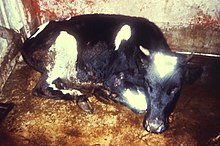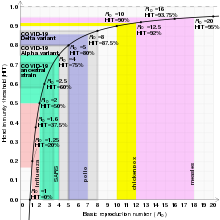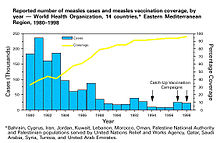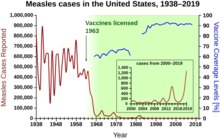From Wikipedia, the free encyclopedia
A money market fund (also called a money market mutual fund) is an open-end mutual fund that invests in short-term debt securities such as US Treasury bills and commercial paper.
Money market funds are managed with the goal of maintaining a highly
stable asset value through liquid investments, while paying income to
investors in the form of dividends. Although they are not insured
against loss, actual losses have been quite rare in practice.
Regulated in the United States under the Investment Company Act of 1940, and in Europe under Regulation 2017/1131, money market funds are important providers of liquidity to financial intermediaries.
Explanation
Money market funds seek to limit exposure to losses due to credit, market, and liquidity risks. Money market funds in the United States are regulated by the Securities and Exchange Commission (SEC) under the Investment Company Act of 1940.
Rule 2a-7 of the act restricts the quality, maturity and diversity of
investments by money market funds. Under this act, a money fund mainly
buys the highest rated debt, which matures in under 13 months. The portfolio must maintain a weighted average maturity (WAM) of 60 days or less and not invest more than 5% in any one issuer, except for government securities and repurchase agreements.
Securities in which money markets may invest include commercial paper, repurchase agreements, short-term bonds and other money funds. Money market securities must be highly liquid and of the highest quality.
History
In 1971, Bruce R. Bent and Henry B. R. Brown established the first money market fund. It was named the Reserve Fund
and was offered to investors who were interested in preserving their
cash and earning a small rate of return. Several more funds were shortly
set up and the market grew significantly over the next few years. Money
market funds are credited with popularizing mutual funds in general,
which until that time, were not widely utilized.
Money market funds in the United States created a solution to the limitations of Regulation Q, which at the time prohibited demand deposit accounts
from paying interest and capped the rate of interest on other types of
bank accounts at 5.25%. Thus, money market funds were created as a
substitute for bank accounts.
In the 1990s, bank interest rates in Japan
were near zero for an extended period of time. To search for higher
yields from these low rates in bank deposits, investors used money
market funds for short-term deposits instead. However, several money
market funds fell off short of their stable value in 2001 due to the bankruptcy of Enron,
in which several Japanese funds had invested, and investors fled into
government-insured bank accounts. Since then the total value of money
markets have remained low.
Money market funds in Europe have always had much lower levels of
investments capital than in the United States or Japan. Regulations in
the EU have always encouraged investors to use banks rather than money market funds for short-term deposits.
Breaking the buck
Money market funds seek a stable net asset value
(NAV) per share (which is generally $1.00 in the United States). They
aim to never lose money. The $1.00 is maintained through the declaration
of dividends to shareholders, typically daily, at an amount equal to
the fund's net income. If a fund's NAV drops below $1.00, it is said
that the fund "broke the buck".
For SEC registered money funds, maintaining the $1.00 flat NAV is
usually accomplished under a provision under Rule 2a-7 of the 40 Act
that allows a fund to value its investments at amortized cost rather
than market value, provided that certain conditions are maintained. One
such condition involves a side-test calculation of the NAV that uses the
market value of the fund's investments. The fund's published, amortized
value may not exceed this market value by more than 1/2 cent per share,
a comparison that is generally made weekly. If the variance does exceed
$0.005 per share, the fund could be considered to have broken the buck,
and regulators may force it into liquidation.
Buck breaking has rarely happened. Up to the 2008 financial crisis, only three money funds had broken the buck in the 37-year history of money funds.
It is important to note that, while money market funds are
typically managed in a fairly safe manner, there would have been many
more failures over this period if the companies offering the money
market funds had not stepped in when necessary to support their fund (by
way of infusing capital to reimburse security losses) and avoid having
the funds break the buck. This was done because the expected cost to
the business from allowing the fund value to drop—in lost customers and
reputation—was greater than the amount needed to bail it out.
The first money market mutual fund to break the buck was First
Multifund for Daily Income (FMDI) in 1978, liquidating and restating NAV
at 94 cents per share. An argument has been made that FMDI was not
technically a money market fund as at the time of liquidation the
average maturity of securities in its portfolio exceeded two years.
However, prospective investors were informed that FMDI would invest
"solely in Short-Term (30-90 days) MONEY MARKET obligations".
Furthermore, the rule restricting the maturities which money market
funds are permitted to invest in, Rule 2a-7 of the Investment Company
Act of 1940, was not promulgated until 1983. Prior to the adoption of
this rule, a mutual fund had to do little other than present itself as a
money market fund, which FMDI did. Seeking higher yield, FMDI had
purchased increasingly longer maturity securities, and rising interest
rates negatively impacted the value of its portfolio. In order to meet
increasing redemptions, the fund was forced to sell a certificate of
deposit at a 3% loss, triggering a restatement of its NAV and the first
instance of a money market fund "breaking the buck".
The Community Bankers US Government Fund broke the buck in 1994,
paying investors 96 cents per share. This was only the second failure in
the then 23-year history of money funds and there were no further
failures for 14 years. The fund had invested a large percentage of its
assets into adjustable rate securities. As interest rates increased,
these floating rate securities lost value. This fund was an institutional money fund, not a retail money fund, thus individuals were not directly affected.
No further failures occurred until September 2008, a month that
saw tumultuous events for money funds. However, as noted above, other
failures were only averted by infusions of capital from the fund
sponsors.
September 2008
Money market funds increasingly became important to the wholesale money market leading up to the crisis. Their purchases of asset-backed securities
and large-scale funding of foreign banks' short-term US-denominated
debt put the funds in a pivotal position in the marketplace.
The week of September 15, 2008, to September 19, 2008, was very
turbulent for money funds and a key part of financial markets seizing
up.
Events
On Monday, September 15, 2008, Lehman Brothers Holdings Inc. filed for bankruptcy. On Tuesday, September 16, 2008, The Reserve Primary Fund broke the buck when its shares fell to 97 cents after writing off debt issued by Lehman Brothers.
Continuing investor anxiety
as a result of the Lehman Brothers bankruptcy and other pending
financial troubles caused significant redemptions from money funds in
general, as investors redeemed their holdings and funds were forced to
liquidate assets or impose limits on redemptions. Through Wednesday,
September 17, 2008, prime institutional funds saw substantial
redemptions. Retail funds saw net inflows of $4 billion, for a net capital outflow from all funds of $169 billion to $3.4 trillion (5%).
In response, on Friday, September 19, 2008, the US Department of the Treasury
announced an optional program to "insure the holdings of any publicly
offered eligible money market mutual fund—both retail and
institutional—that pays a fee to participate in the program". The
insurance guaranteed that if a covered fund had broken the buck, it
would have been restored to $1 NAV. The program was similar to the FDIC, in that it insured deposit-like holdings and sought to prevent runs on the bank. The guarantee was backed by assets of the Treasury Department's Exchange Stabilization Fund,
up to a maximum of $50 billion. This program only covered assets
invested in funds before September 19, 2008, and those who sold
equities, for example, during the subsequent market crash and parked
their assets in money funds, were at risk. The program immediately
stabilized the system and stanched the outflows, but drew criticism from
banking organizations, including the Independent Community Bankers of America and American Bankers Association,
who expected funds to drain out of bank deposits and into newly insured
money funds, as these latter would combine higher yields with
insurance.
The guarantee program ended on September 18, 2009, with no losses and
generated $1.2 billion (~$1.66 billion in 2023) in revenue from the
participation fees.
Analysis
The crisis, which eventually became the catalyst for the Emergency Economic Stabilization Act of 2008, almost developed into a run on money funds: the redemptions caused a drop in demand for commercial paper, preventing companies from rolling over their short-term debt, potentially causing an acute liquidity crisis: if companies cannot issue new debt to repay maturing debt, and do not have cash on hand to pay it back, they will default on their obligations, and may have to file for bankruptcy. Thus there was concern that the run could cause extensive bankruptcies, a debt deflation spiral, and serious damage to the real economy, as in the Great Depression.
The drop in demand resulted in a "buyers strike", as money funds
could not (because of redemptions) or would not (because of fear of
redemptions) buy commercial paper, driving yields up dramatically: from
around 2% the previous week to 8%, and funds put their money in Treasuries, driving their yields close to 0%.
This is a bank run in the sense that there is a mismatch in maturities,
and thus a money fund is a "virtual bank": the assets of money funds,
while short term, nonetheless typically have maturities of several
months, while investors can request redemption at any time, without
waiting for obligations to come due. Thus if there is a sudden demand
for redemptions, the assets may be liquidated in a fire sale, depressing their sale price.
An earlier crisis occurred in 2007–2008, where the demand for asset-backed commercial paper dropped, causing the collapse of some structured investment vehicles. As a result of the events, the Reserve Fund liquidated, paying shareholders 99.1 cents per share.
Statistics
The Investment Company Institute
reports statistics on money funds weekly as part of its mutual fund
statistics, as part of its industry statistics, including total assets
and net flows, both for institutional and retail funds. It also provides
annual reports in the ICI Fact Book.
At the end of 2011, there were 632 money market funds in operation, with total assets of nearly US$2.7 trillion.
Of this $2.7 trillion, retail money market funds had $940 billion in
Assets Under Management (AUM). Institutional funds had $1.75 trillion
under management.
Types and size of money funds
In
the United States, the fund industry and its largest trade
organization, the Investment Company Institute, generally categorize
money funds into the type of investment strategy: Prime, Treasury or
Tax-exempt as well as distribution channel/investor: Institutional or
Retail.
Prime money fund
A
fund that invests generally in variable-rate debt and commercial paper
of corporations and securities of the US government and agencies. Can be
considered of any money fund that is not a Treasury or Tax-exempt fund.
Government and Treasury money funds
A
Government money fund (as of the SEC's July 24, 2014 rule release) is
one that invests at least 99.5% of its total assets in cash, government
securities, and/or repurchase agreements that are "collateralized fully"
(i.e., collateralized by cash or government securities). A Treasury
fund is a type of government money fund that invests in US Treasury
Bills, Bonds and Notes.
Tax-exempt money fund
The
fund invests primarily in obligations of state and local jurisdictions
("municipal securities") generally exempt from US Federal Income Tax
(and to some extent state income taxes).
Institutional money fund
Institutional
money funds are high minimum investment, low expense share classes that
are marketed to corporations, governments, or fiduciaries. They are
often set up so that money is swept to them overnight from a company's
main operating accounts. Large national chains often have many accounts
with banks all across the country, but electronically pull a majority of
funds on deposit with them to a concentrated money market fund.
Retail money fund
Retail
money funds are offered primarily to individuals. Retail money market
funds hold roughly 33% of all money market fund assets.
Fund yields are typically somewhat higher than bank savings accounts,
but of course these are different products with differing risks (e.g.,
money fund accounts are not insured and are not deposit accounts). Since
Retail funds generally have higher servicing needs and thus expenses
than Institutional funds, their yields are generally lower than
Institutional funds.
SEC rule amendments released July 24, 2014, have 'improved' the
definition of a Retail money fund to be one that has policies and
procedures reasonably designed to limit its shareholders to natural
persons.
Money fund sizes
Recent
total net assets for the US Fund industry are as follows: total net
assets $2.6 trillion: $1.4 trillion in Prime money funds, $907 billion
in Treasury money funds, $257 billion in Tax-exempt. Total Institutional
assets outweigh Retail by roughly 2:1.
The largest institutional money fund is the JPMorgan
Prime Money Market Fund, with over US$100 billion in assets. Among the
largest companies offering institutional money funds are BlackRock, Western Asset, Federated Investors, Bank of America, Dreyfus, AIM and Evergreen (Wachovia).
The largest money market mutual fund is Vanguard Federal Money Market Fund (Nasdaq:VMFXX), with assets exceeding US$120 billion. The largest retail money fund providers include: Fidelity, Vanguard, and Schwab.
Similar investments
Money market accounts
Banks in the United States offer savings and money market deposit accounts, but these should not be confused with money mutual funds. These bank accounts offer higher yields than traditional passbook savings accounts,
but often with higher minimum balance requirements and limited
transactions. A money market account may refer to a money market mutual
fund, a bank money market deposit account (MMDA) or a brokerage sweep
free credit balance.
Ultrashort bond funds
Ultrashort
bond funds are mutual funds, similar to money market funds, that, as
the name implies, invest in bonds with extremely short maturities.
Unlike money market funds, however, there are no restrictions on the
quality of the investments they hold. Instead, ultrashort bond funds
typically invest in riskier securities in order to increase their
return. Since these high-risk securities can experience large swings in
price or even default, ultrashort bond funds, unlike money market funds,
do not seek to maintain a stable $1.00 NAV and may lose money or dip
below the $1.00 mark in the short term.
Finally, because they invest in lower quality securities, ultrashort
bond funds are more susceptible to adverse market conditions such as
those brought on by the financial crisis of 2007–2010.
Enhanced cash funds
Enhanced cash funds are bond funds similar to money market funds, in that they aim to provide liquidity and principal preservation, but which:
- Invest in a wider variety of assets, and do not meet the restrictions of SEC Rule 2a-7;
- Aim for higher returns;
- Have less liquidity;
- Do not aim as strongly for stable NAV.
Enhanced cash funds will typically invest some of their portfolio in
the same assets as money market funds, but others in riskier, higher
yielding, less liquid assets such as:
In general, the NAV will stay close to $1, but is expected to fluctuate above and below, and will break the buck more often.
Different managers place different emphases on risk versus return in
enhanced cash – some consider preservation of principal as paramount,
and thus take few risks, while others see these as more bond-like, and
an opportunity to increase yield without necessarily preserving
principal. These are typically available only to institutional
investors, not retail investors.
The purpose of enhanced cash funds is not to replace money
markets, but to fit in the continuum between cash and bonds – to provide
a higher yielding investment for more permanent cash. That is, within
one's asset allocation, one has a continuum between cash and long-term investments:
- Cash – most liquid and least risky, but low yielding;
- Money markets / cash equivalents;
- Enhanced cash;
- Long-term bonds and other non-cash long-term investments – least liquid and most risky, but highest yielding.
Enhanced cash funds were developed due to low spreads in traditional cash equivalents.
There are also funds which are billed as "money market funds",
but are not 2a-7 funds (do not meet the requirements of the rule). In addition to 2a-7 eligible securities, these funds invest in Eurodollars and repos (repurchase agreements), which are similarly liquid and stable to 2a-7 eligible securities, but are not allowed under the regulations.
Systemic risk and global regulatory reform
US regulatory reform
A deconstruction of the September 2008 events around money market funds, and the resulting fear, panic, contagion, classic bank run,
emergency need for substantial external propping up, etc. revealed that
the US regulatory system covering the basic extension of credit has had
substantial flaws that in hindsight date back at least two decades.
It has long been understood that regulation around the extension
of credit requires substantial levels of integrity throughout the
system. To the extent regulation can help insure that base levels of
integrity persist throughout the chain, from borrower to lender, and it
curtails the overall extension of credit to reasonable levels, episodic
financial crisis may be averted.
In the 1970s, money market funds began disintermediating banks
from their classic interposition between savers and borrowers. The funds
provided a more direct link, with less overhead. Large banks are
regulated by the Federal Reserve Board and the Office of the Comptroller of the Currency. Notably, the Fed is itself owned by the large private
banks, and controls the overall supply of money in the United States.
The OCC is housed within the Treasury Department, which in turn manages
the issuance and maintenance of the multi-trillion dollar debt of the US
government. The overall debt is of course connected to ongoing federal
government spending vs. actual ongoing tax receipts. Unquestionably, the
private banking industry, bank regulation, the national debt, and
ongoing governmental spending politics are substantially interconnected.
Interest rates incurred on the national debt is subject to rate setting
by the Fed, and inflation (all else being equal) allows today's fixed
debt obligation to be paid off in ever cheaper to obtain dollars. The
third major bank regulator, designed to swiftly remove failing banks is
the Federal Deposit Insurance Corporation,
a bailout fund and resolution authority that can eliminate banks that
are failing, with minimum disruption to the banking industry itself.
They also help ensure depositors continue to do business with banks
after such failures by insuring their deposits.
From the outset, money market funds fell under the jurisdiction of the SEC as they appeared to be more like investments (most similar to traditional stocks and bonds) vs. deposits and loans (cash and cash equivalents the domain of the bankers). Although money market funds are quite close to and are often accounted for as cash equivalents
their main regulator, the SEC, has zero mandate to control the supply
of money, limit the overall extension of credit, mitigate against boom
and bust cycles, etc. The SEC's focus remains on adequate disclosure of
risk, and honesty and integrity in financial reporting and trading
markets. After adequate disclosure, the SEC adopts a hands off, let the buyer beware attitude.
To many retail investors, money market funds are confusingly
similar to traditional bank demand deposits. Virtually all large money
market funds offer check writing, ACH transfers, wiring of funds,
associated debit and credit cards, detailed monthly statements of all
cash transactions, copies of canceled checks, etc. This makes it appear
that cash is actually in the individual's account. With net asset
values reported flat at $1.00, despite the market value variance of the
actual underlying assets, an impression of rock solid stability is
maintained. To help maintain this impression, money market fund managers
frequently forgo being reimbursed legitimate fund expenses, or cut
their management fee, on an ad hoc and informal basis, to maintain that
solid appearance of stability.
To illustrate the various blending and blurring of functions
between classic banking and investing activities at money market funds, a
simplified example will help. Imagine only retail "depositors" on one
end, and S&P 500 corporations borrowing through the commercial paper
market on the other. The depositors assume:
- Extremely short duration (60 days or less)
- Extremely broad diversification (hundreds, if not thousands of positions)
- Very high grade investments.
After 10–20 years of stability the "depositors" here assume safety,
and move all cash to money markets, enjoying the higher interest rates.
On the borrowing end, after 10–20 years, the S&P 500
corporations become extremely accustomed to obtaining funds via these
money markets, which are very stable. Initially, perhaps they only
borrowed in these markets for a highly seasonal cash needs, being a net
borrower for only say 90 days per year. They would borrow here as they
experienced their deepest cash needs over an operating cycle to
temporarily finance short-term build ups in inventory and receivables.
Or, they moved to this funding market from a former bank revolving line
of credit, that was guaranteed to be available to them as they needed
it, but had to be cleaned up to a zero balance for at least 60 days out
of the year. In these situations the corporations had sufficient other
equity and debt financing for all of their regular capital needs. They
were however dependent on these sources to be available to them, as
needed, on an immediate daily basis.
Over time, money market fund "depositors" felt more and more
secure, and not really at risk. Likewise, on the other end, corporations
saw the attractive interest rates and incredibly easy ability to
constantly roll over short term commercial paper. Using rollovers they
then funded longer and longer term obligations via the money markets.
This expands credit. It's also over time clearly long-term borrowing on one end, funded by an on-demand depositor on the other, with some substantial obfuscation as to what is ultimately going on in between.
In the wake of the crisis two solutions have been proposed. One,
repeatedly supported over the long term by the GAO and others is to
consolidate the US financial industry regulators. A step along this line
has been the creation of the Financial Stability Oversight Council to address systemic risk
issues that have in the past, as amply illustrated by the money market
fund crisis above, fallen neatly between the cracks of the standing
isolated financial regulators. Proposals to merge the SEC and CFTC have also been made.
A second solution, more focused on money market funds directly,
is to re-regulate them to address the common misunderstandings, and to
ensure that money market "depositors", who enjoy greater interest rates,
thoroughly understand the actual risk they are undertaking. These risks
include substantial interconnectedness between and among money market
participants, and various other substantial systemic risks factors.
One solution is to report to money market "depositors" the
actual, floating net asset value. This disclosure has come under strong
opposition by Fidelity Investments, The Vanguard Group, BlackRock, and the US Chamber of Commerce as well as others.
The SEC would normally be the regulator to address the risks to
investors taken by money market funds, however to date the SEC has been
internally politically gridlocked. The SEC is controlled by five
commissioners, no more than three of which may be the same political
party. They are also strongly enmeshed with the current mutual fund
industry, and are largely divorced from traditional banking industry
regulation. As such, the SEC is not concerned over overall credit
extension, money supply, or bringing shadow banking under the regulatory umbrella of effective credit regulation.
As the SEC was gridlocked, the Financial Stability Oversight
Council promulgated its own suggested money market reforms and threatens
to move forward if the SEC doesn't button it up with an acceptable
solution of their own on a timely basis. The SEC has argued vociferously
that this is "their area" and FSOC should back off and let them handle
it, a viewpoint shared by four former SEC chairmen, Roderick Hills, David Ruder, Richard Breeden, and Harvey Pitt, and two former commissioners, Roel Campos and Paul S. Atkins.
US Reform: SEC Rule Amendments released July 24, 2014
The
Securities and Exchange Commission (SEC) issued final rules that are
designed to address money funds’ susceptibility to heavy redemptions in
times of stress, improve their ability to manage and mitigate potential
contagion from such redemptions, and increase the transparency of their
risks, while preserving, as much as possible, their benefits.
There are several key components:
Floating NAV required of institutional non-government money funds
The SEC is removing the valuation exemption that permitted these
funds (whose investors historically have made the heaviest redemptions
in times of stress) to maintain a stable NAV, i.e., they will have to
transact sales and redemptions as a market value-based or "floating"
NAV, rounded to the fourth decimal place (e.g., $1.0000).
Fees and gates
The SEC is giving money fund boards of directors the discretion
whether to impose a liquidity fee if a fund's weekly liquidity level
falls below the required regulatory threshold, and/or to suspend
redemptions temporarily, i.e., to "gate" funds, under the same
circumstances. These amendments will require all non-government money
funds to impose a liquidity fee if the fund's weekly liquidity level
falls below a designated threshold, unless the fund's board determines
that imposing such a fee is not in the best interests of the fund.
Other provisions
In addition, the SEC is adopting amendments designed to make
money market funds more resilient by increasing the diversification of
their portfolios, enhancing their stress testing,
and improving transparency by requiring money market funds to report
additional information to the SEC and to investors. Additionally, stress
testing will be required and a key focus will be placed on the funds
ability to maintain weekly liquid assets of at least 10%.
Finally, the amendments require investment advisers to certain large
unregistered liquidity funds, which can have many of the same economic
features as money market funds, to provide additional information about
those funds to the SEC.
EU regulatory reform
In parallel with the US Reform, the EU completed drafting of a similar regulation for the money market fund product.
On June 30, 2017, Regulation (EU) 2017/1131 for money market funds
was published in the Official Journal of the European Union,
introducing new rules for MMFs domiciled, managed or marketed in the
European Union. This entered into effect in March 2019. The regulation
introduces four new categories of fund structures for MMFs:
- Public Debt Constant Net Asset Value (CNAV) MMFs are short-term
MMFs. Funds must invest 99.5% in government assets. Units in the fund
are purchased or redeemed at a constant price rounded to the nearest
percentage point.
- Low Volatility Net Asset Value (LVNAV) MMFs are short-term MMFs.
Funds around are purchased or redeemed at a constant price so long as
the value of the underlying assets do not deviate by more than 0.2%
(20bit/s) from par (i.e. 1.00).
- Short Term Variable NAV – Short-term Variable Net Asset Value (VNAV)
MMFs are primarily invested in money market instruments, deposits and
other MMFs. Funds are subject to looser liquidity rules than Public Debt
CNAV and LVNAV funds. Units in the funds are purchased or redeemed at a
variable price calculated to the equivalent of at least four
significant figures (e.g. 10,000.00).
- Standard Variable NAV VNAV– Standard MMFs must be VNAV funds. Funds
are primarily invested in money market instruments, deposits and other
short-term assets. Funds are subject to looser liquidity rules than
Public Debt CNAV and LVNAV funds AND may invest in assets of much longer
maturity. Units in the funds are purchased or redeemed at a variable
price calculated to the equivalent of at least four significant figures
(e.g. 10,000.00).
Although the starting products were similar, there are now
considerable differences between US and EU MMFs. Whilst EU MMF investors
mostly moved to successor fund types, investors in US MMFs undertook a
huge and persisting switch from Prime into Government MMF.
The EU MMF Regulation does not make any reference to either fund
or portfolio external credit rating requirements. Throughout the
transition EU MMFs overwhelmingly retained their existing ratings, and
the credit rating agencies have confirmed their commitment to the
MMF-specific rating criteria they each maintain.
A major difference in scope is that, on a like-for-like basis, US MMFs may be compared only to EU short-term MMFs.













